Abstract
The behaviour of motor units in the m. biceps brachii (long head), in the m. brachialis and in the m. supinator during slow isometric contraction and relaxation was studied when subjects were performing different motor tasks. These tasks were: flexion of the elbow joint, supination of the forearm and exorotation of the humerus. Motor unit activity was recorded by means of bipolar fine wire electrodes. In the long head of the biceps, motor unit activity was recorded at medial, central and lateral sites. When the subject relaxed from flexion, the firing rate of motor units located in the biceps and the brachialis was always found to be lower than that at the corresponding level of flexion force during contraction. The firing rate during relaxation decreased slowly and almost linearly with force. However, during relaxation from supination or exorotation, the firing rate of motor units at medial and central locations in the biceps was more or less constant until decruitment. The firing rate of motor units of the supinator during relaxation from supination decreased slowly and was lower than during contraction. Motor units located medially and centrally in the biceps had decruitment thresholds for flexion that were lower than their recruitment thresholds. Motor units on the lateral side of the biceps did not show such a difference. In the brachialis decruitment thresholds for flexion were usually higher than the recruitment thresholds. Differences between decruitment and recruitment thresholds for motor units in the biceps were much more pronounced for supination and exorotation than for flexion. For motor units in the supinator the decruitment threshold during relaxation from supination was higher than the recruitment threshold. The time that had passed after the onset of firing of a motor unit did not influence its decruitment threshold. If, after complete relaxation, the exerted force was increased again, it appeared that the recruitment threshold was changed. It took about 4 s to reach the original recruitment threshold. It is concluded that the relation between the firing rate of a motor unit and total exerted force depends on the phase of contraction. This relation varies within a muscle and between muscles. Furthermore, the results indicate an interchange of activity within the motoneurone pools of the synergists involved in isometrical motor tasks.
Full text
PDF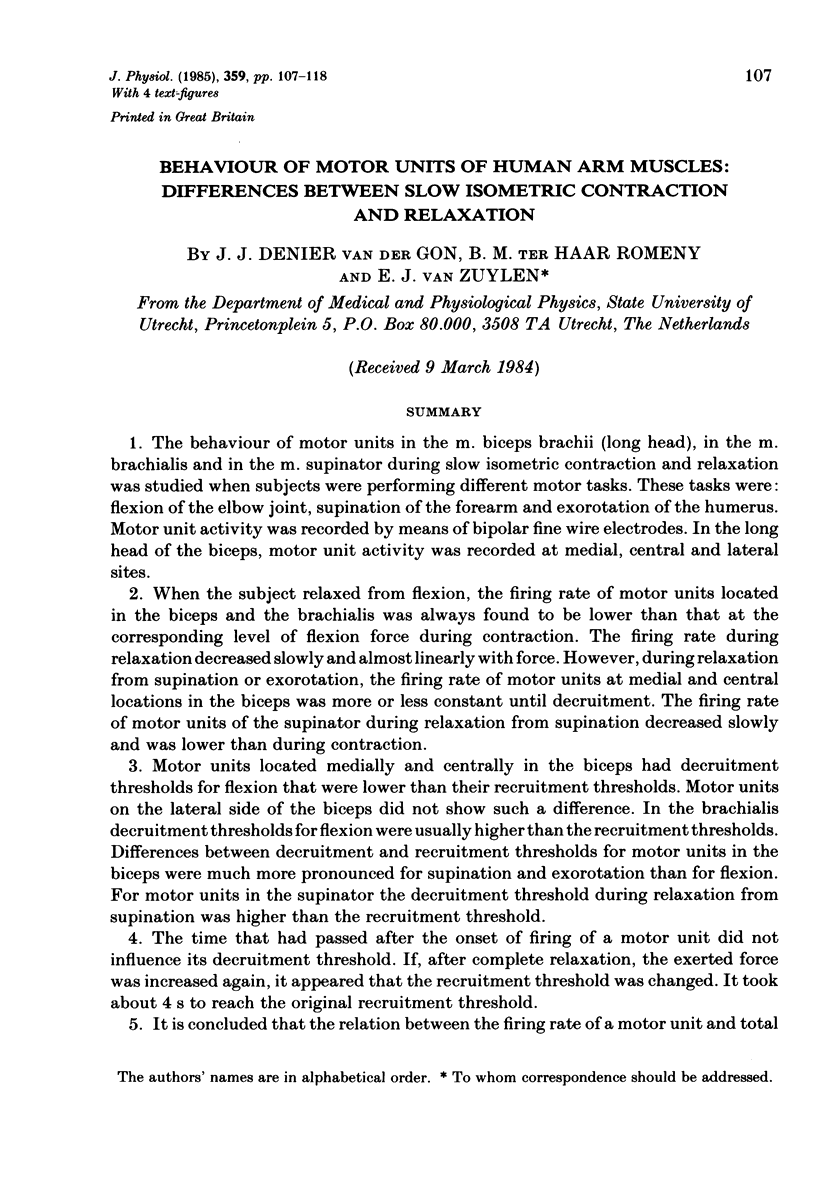
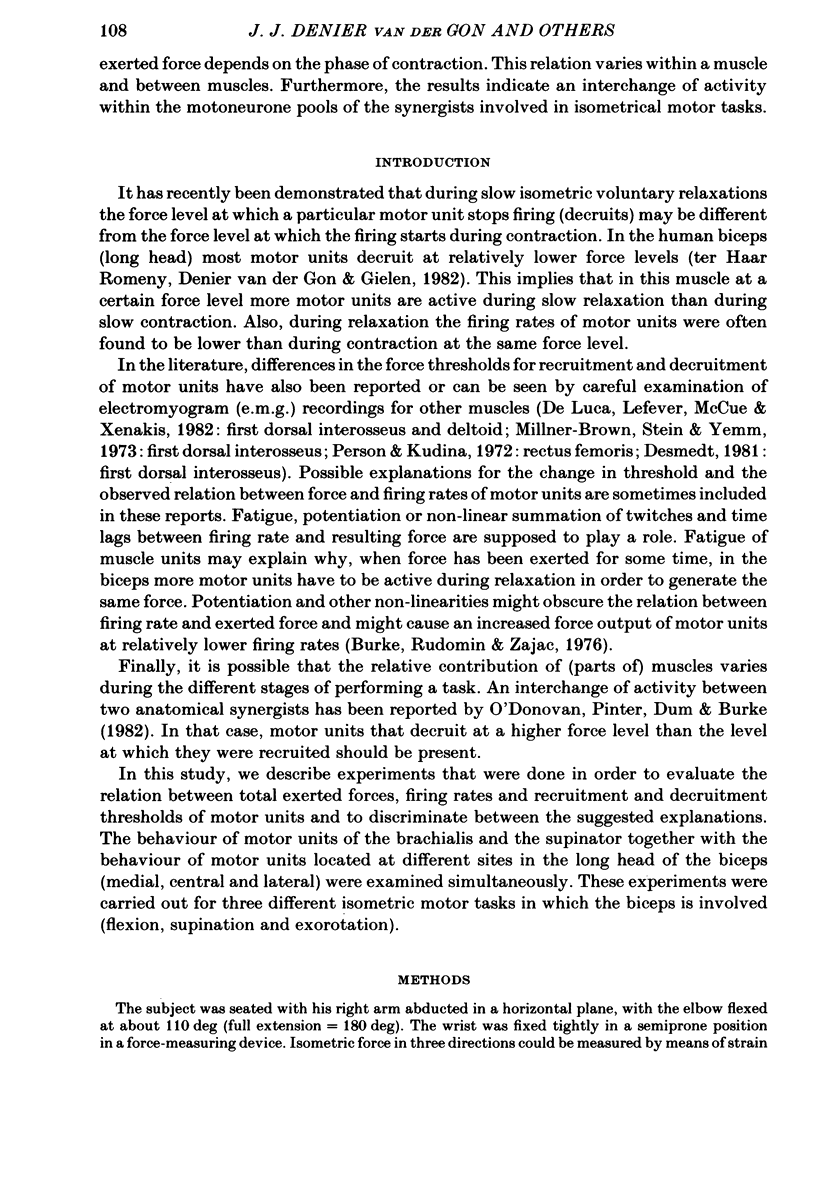
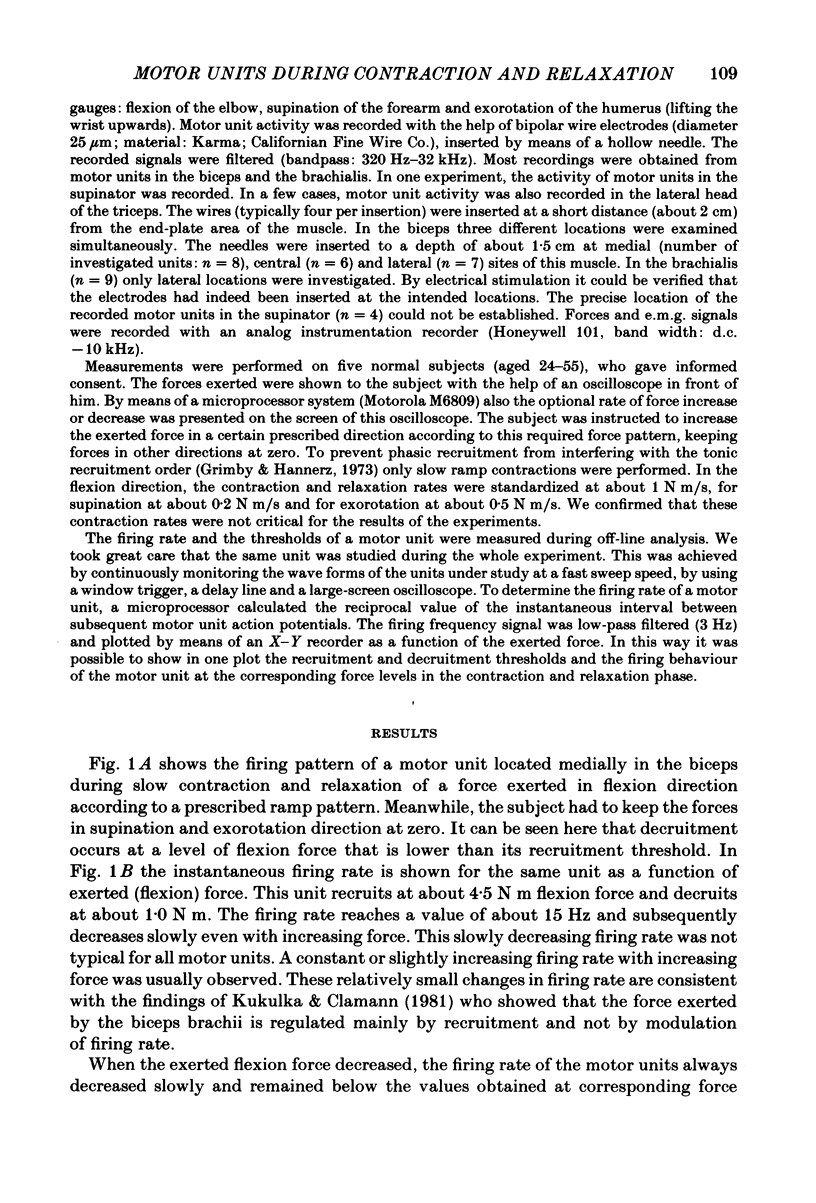
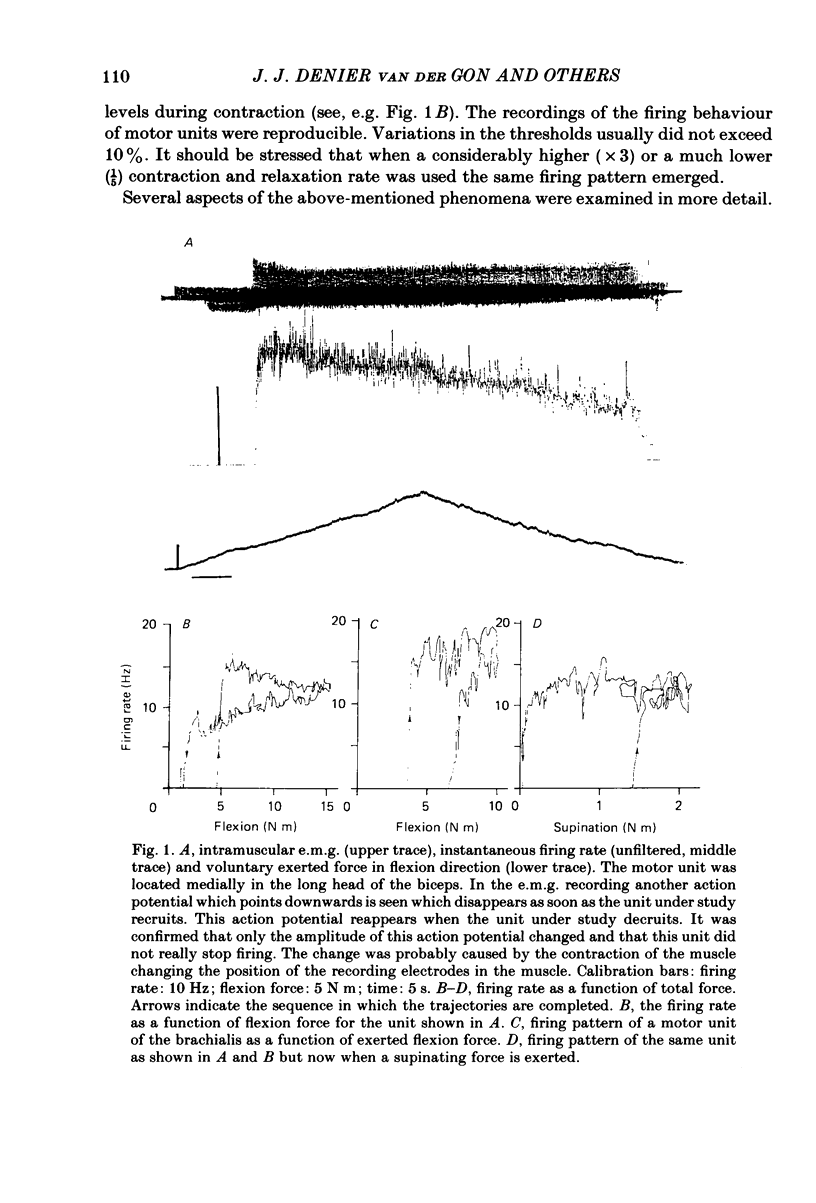
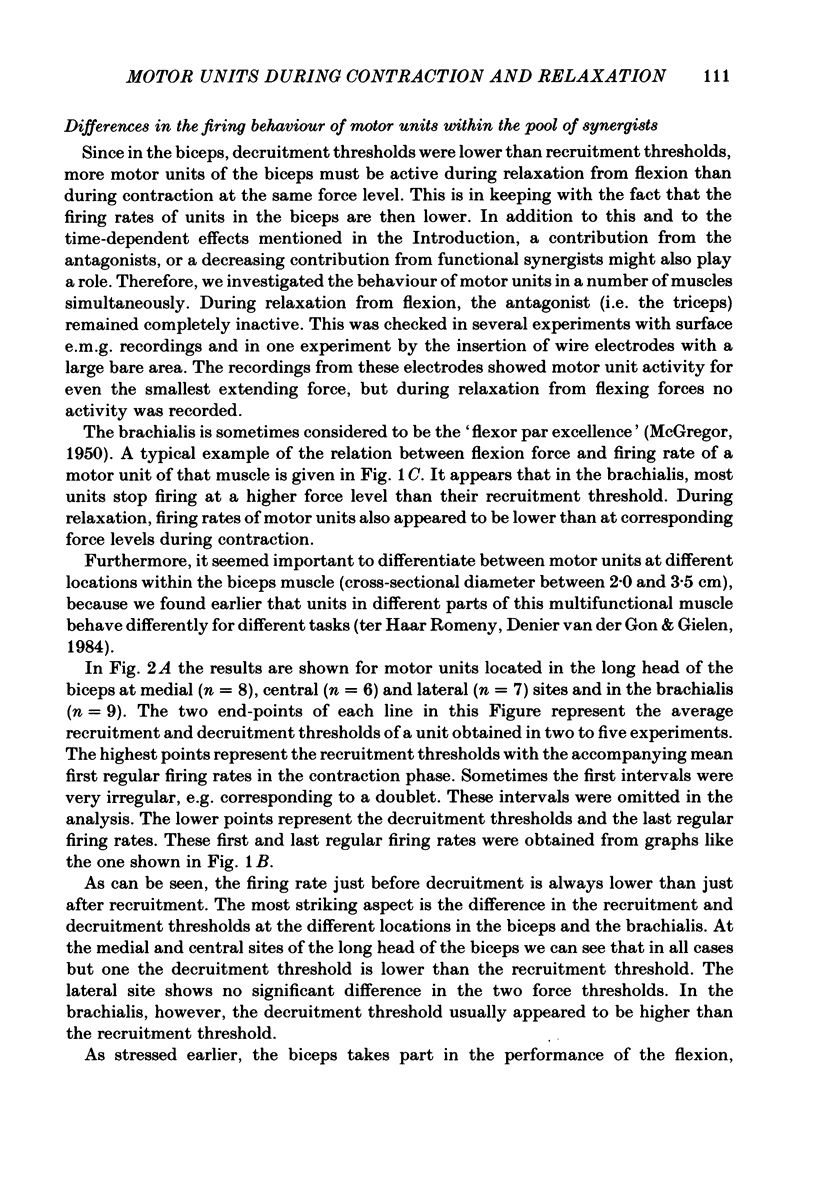
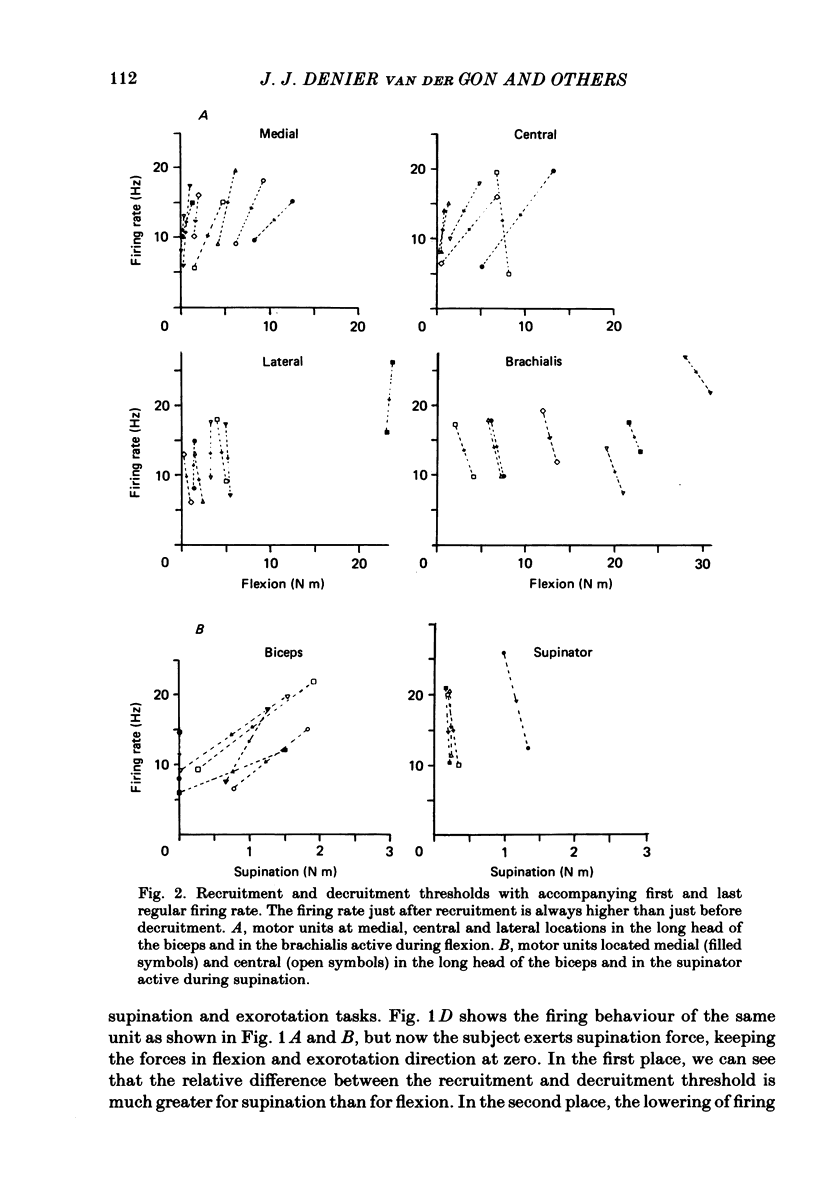
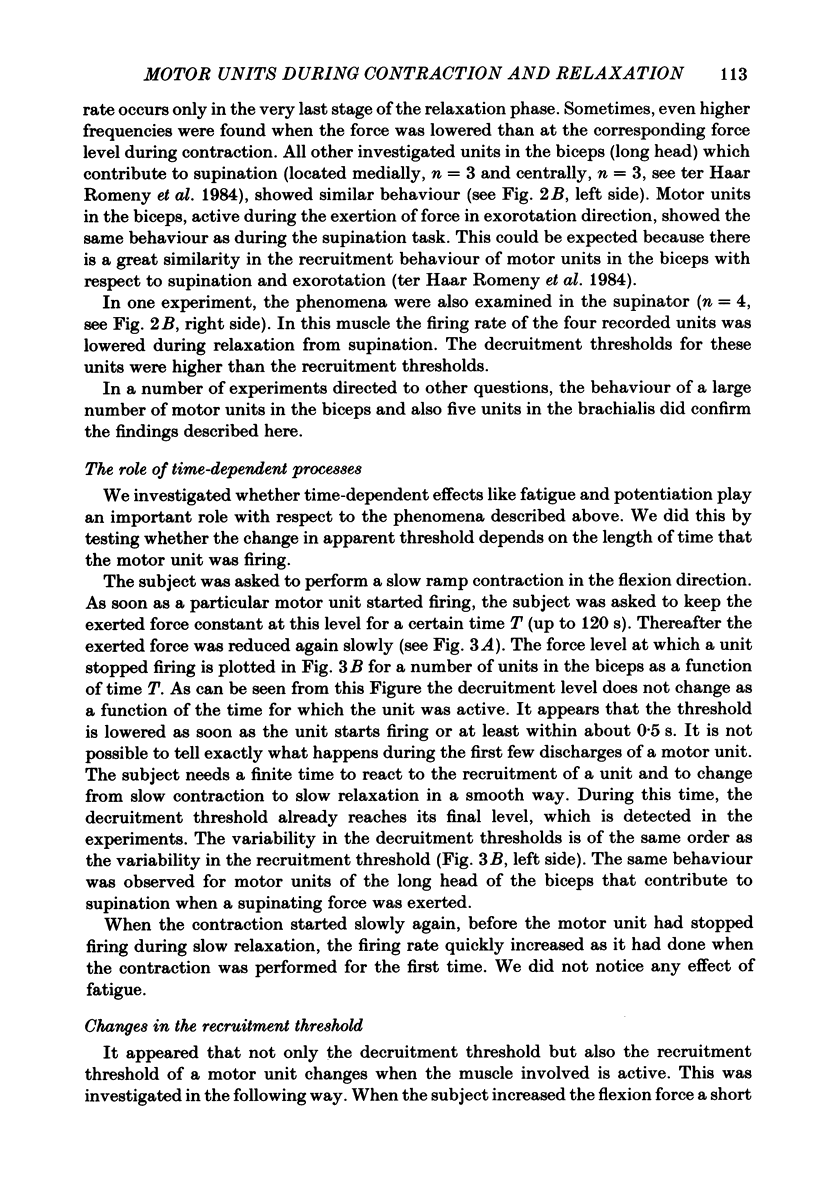
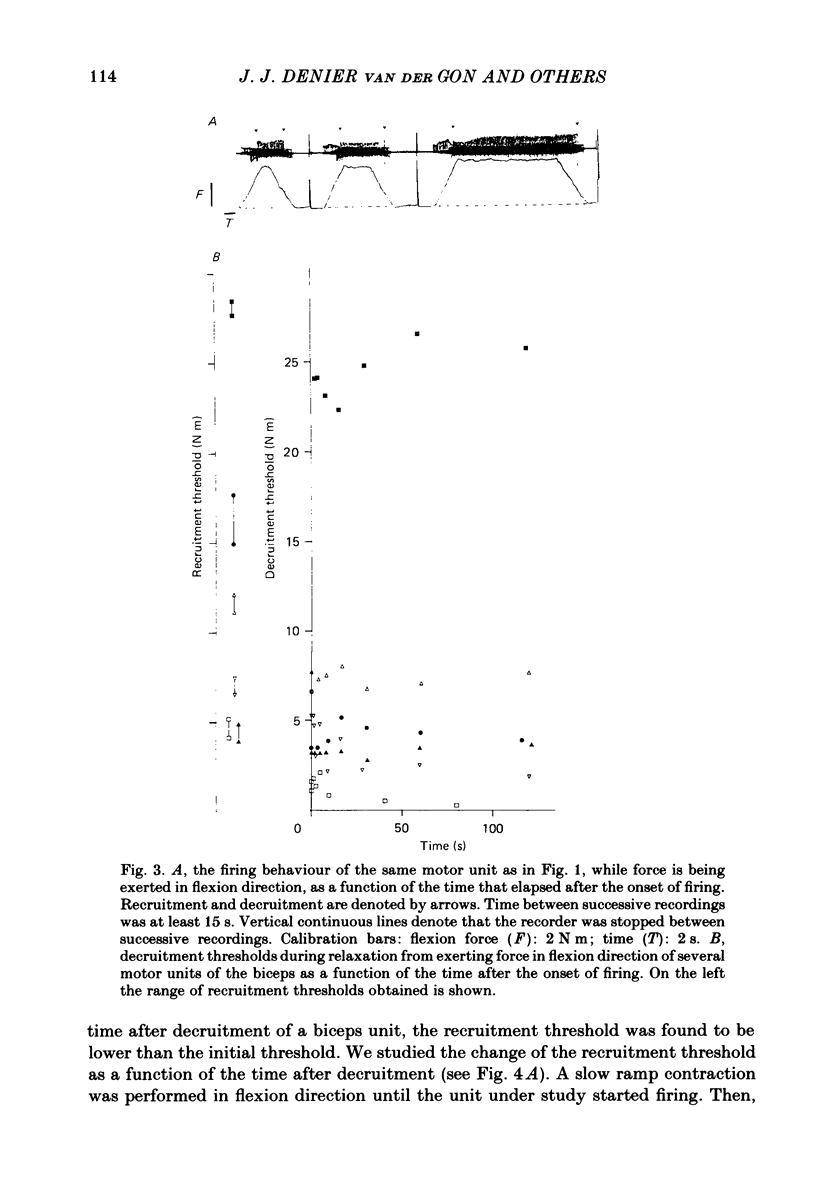
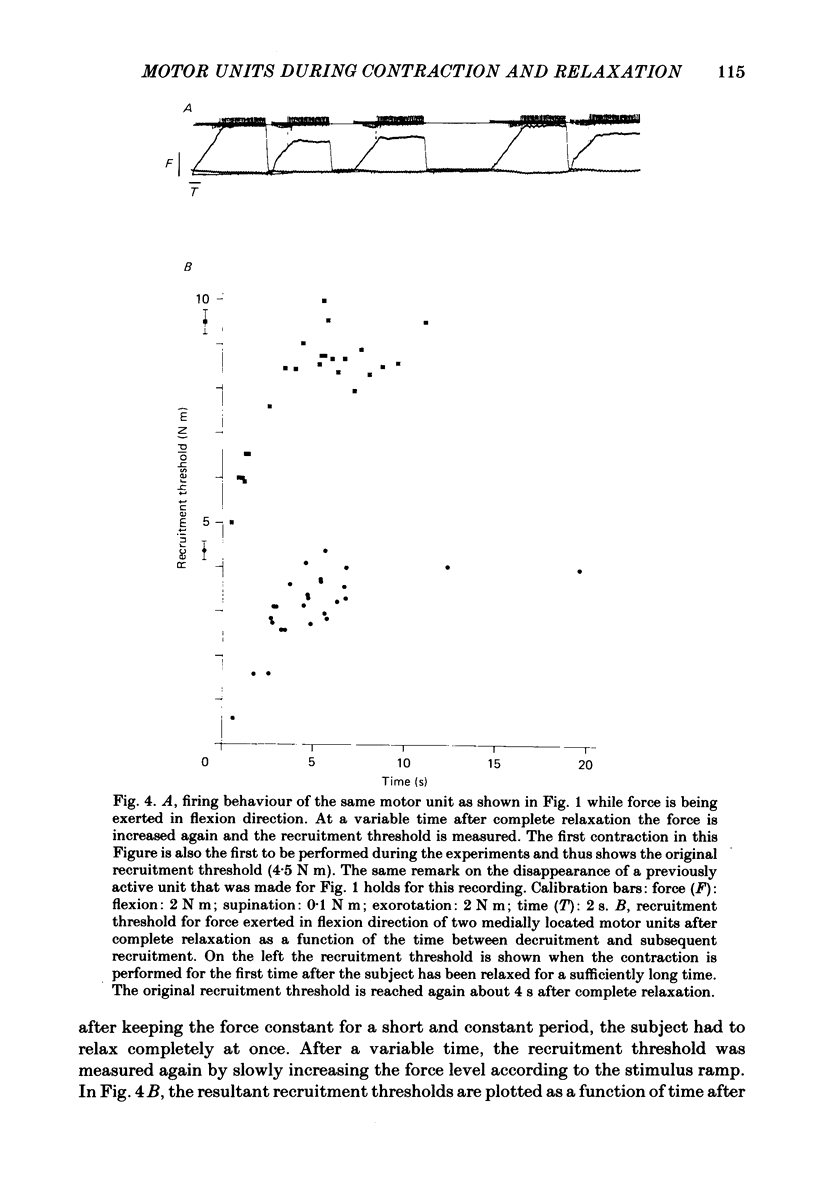
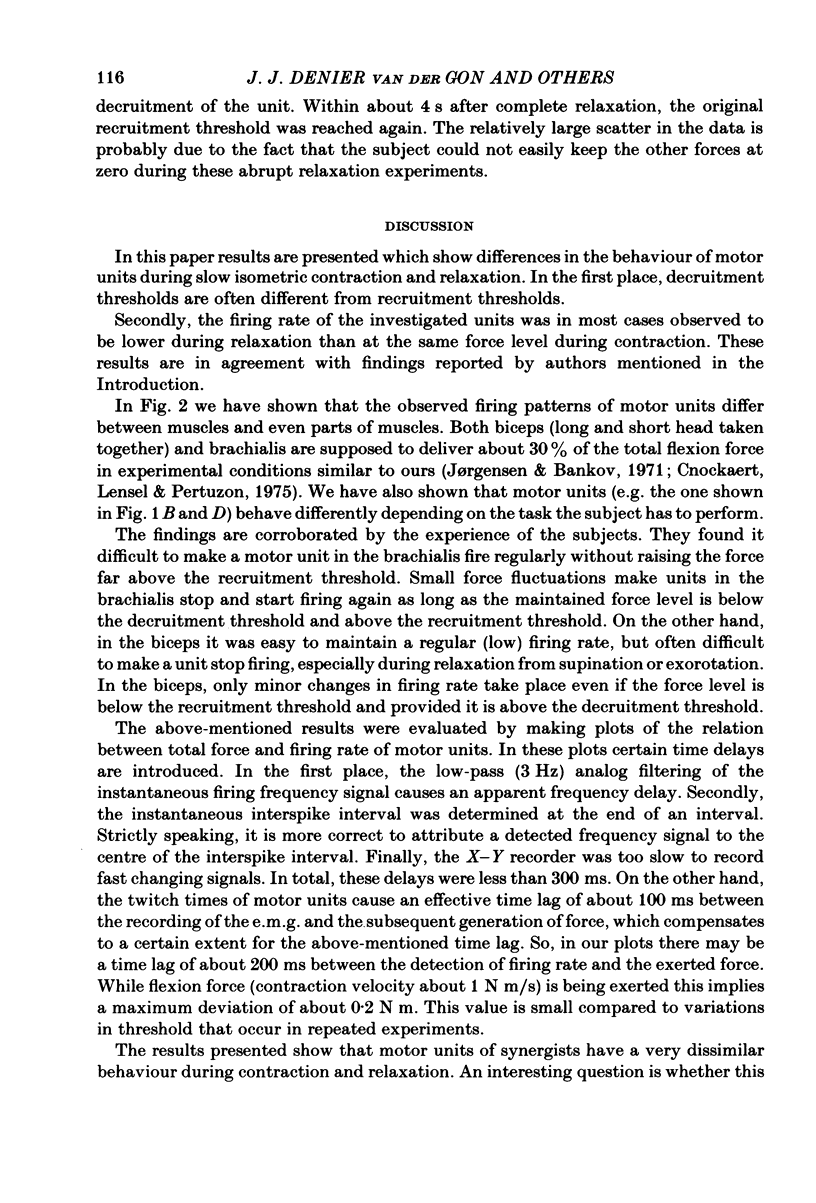
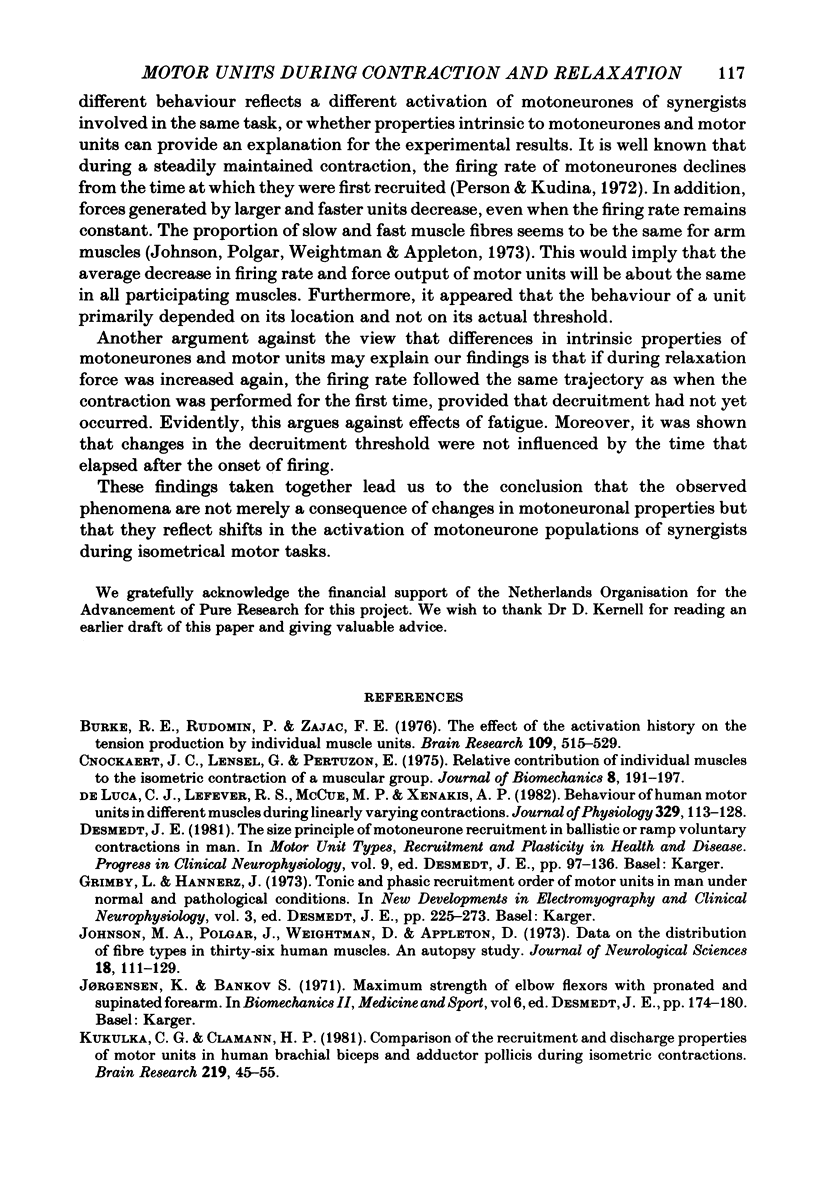

Selected References
These references are in PubMed. This may not be the complete list of references from this article.
- Burke R. E., Rudomin P., Zajac F. E., 3rd The effect of activation history on tension production by individual muscle units. Brain Res. 1976 Jun 18;109(3):515–529. doi: 10.1016/0006-8993(76)90031-7. [DOI] [PubMed] [Google Scholar]
- Cnockaert J. C., Lensel G., Pertuzon E. Relative contribution of individual muscles to the isometric contraction of a muscular group. J Biomech. 1975 Jul;8(3-4):191–197. doi: 10.1016/0021-9290(75)90024-x. [DOI] [PubMed] [Google Scholar]
- De Luca C. J., LeFever R. S., McCue M. P., Xenakis A. P. Behaviour of human motor units in different muscles during linearly varying contractions. J Physiol. 1982 Aug;329:113–128. doi: 10.1113/jphysiol.1982.sp014293. [DOI] [PMC free article] [PubMed] [Google Scholar]
- Johnson M. A., Polgar J., Weightman D., Appleton D. Data on the distribution of fibre types in thirty-six human muscles. An autopsy study. J Neurol Sci. 1973 Jan;18(1):111–129. doi: 10.1016/0022-510x(73)90023-3. [DOI] [PubMed] [Google Scholar]
- Kukulka C. G., Clamann H. P. Comparison of the recruitment and discharge properties of motor units in human brachial biceps and adductor pollicis during isometric contractions. Brain Res. 1981 Aug 24;219(1):45–55. doi: 10.1016/0006-8993(81)90266-3. [DOI] [PubMed] [Google Scholar]
- Maton B. Human motor unit activity during the onset of muscle fatigue in submaximal isometric isotonic contraction. Eur J Appl Physiol Occup Physiol. 1981;46(3):271–281. doi: 10.1007/BF00423403. [DOI] [PubMed] [Google Scholar]
- Milner-Brown H. S., Stein R. B., Yemm R. The orderly recruitment of human motor units during voluntary isometric contractions. J Physiol. 1973 Apr;230(2):359–370. doi: 10.1113/jphysiol.1973.sp010192. [DOI] [PMC free article] [PubMed] [Google Scholar]
- Person R. S., Kudina L. P. Discharge frequency and discharge pattern of human motor units during voluntary contraction of muscle. Electroencephalogr Clin Neurophysiol. 1972 May;32(5):471–483. doi: 10.1016/0013-4694(72)90058-2. [DOI] [PubMed] [Google Scholar]
- ter Haar Romeny B. M., Denier van der Gon J. J., Gielen C. C. Changes in recruitment order of motor units in the human biceps muscle. Exp Neurol. 1982 Nov;78(2):360–368. doi: 10.1016/0014-4886(82)90054-1. [DOI] [PubMed] [Google Scholar]
- ter Haar Romeny B. M., van der Gon J. J., Gielen C. C. Relation between location of a motor unit in the human biceps brachii and its critical firing levels for different tasks. Exp Neurol. 1984 Sep;85(3):631–650. doi: 10.1016/0014-4886(84)90036-0. [DOI] [PubMed] [Google Scholar]


